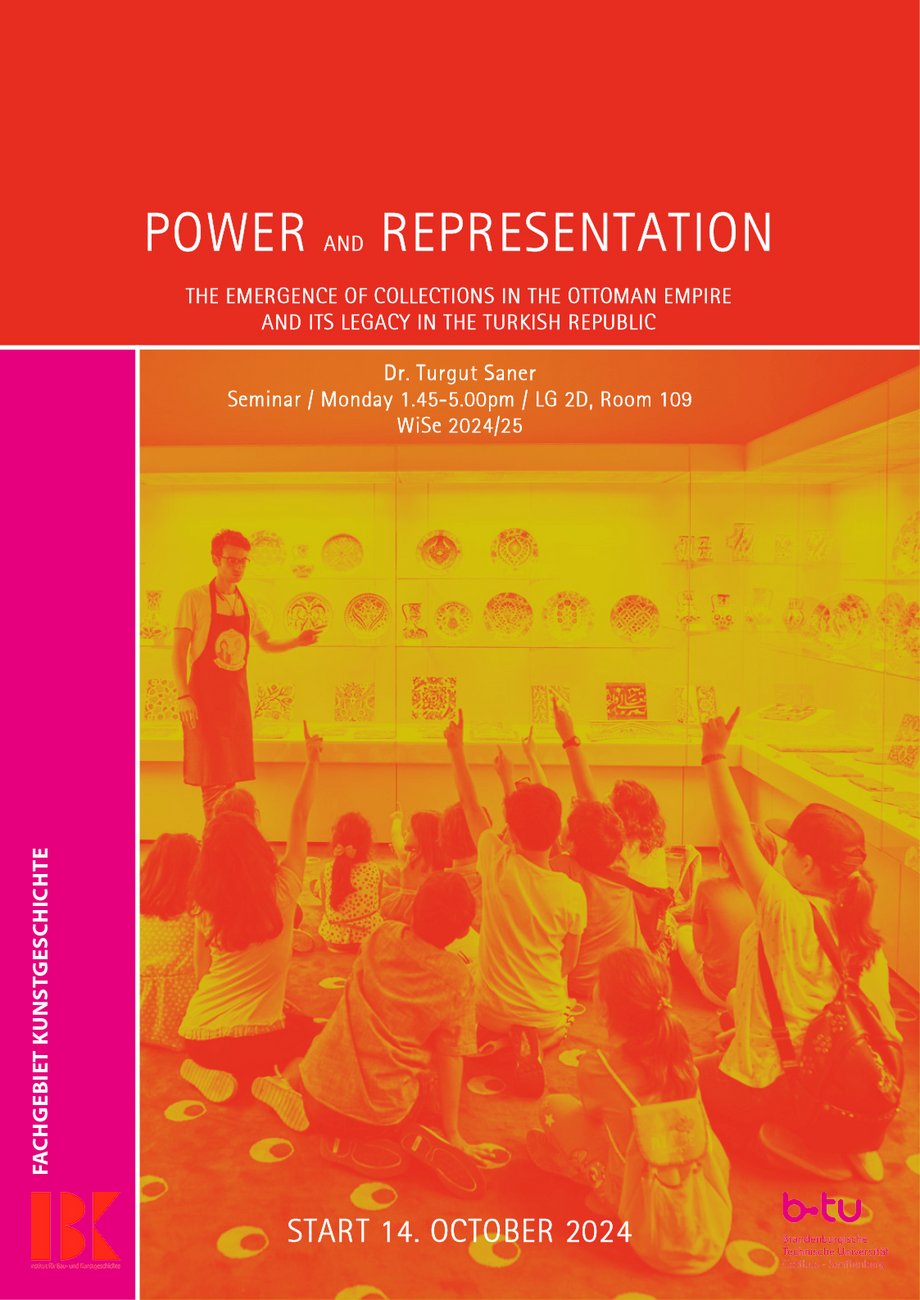Power and Representation The Emergence of Collections in the Ottoman Empire and its Legacy in the Turkish Republic

The cabinets of curiosities inside the European and Asian noble houses and palaces, which became particularly fashionable starting with the 16th century, played an important role in the creation of today’s public museums and collections. The treatment of cultural assets from private collections and museums is currently viewed as a critical scientific topic worldwide. Questions of provenance, the articulation of collections and museum buildings, criteria for temporary and permanent exhibitions, as well as the way in which cultural institutions consider their holdings and present them to the public are among the most important tasks of museology.
As in Europe, it was the 19th century when archaeological artifacts, Islamic works of art and ethnographic pieces were systematically collected in the Ottoman Empire for the first time. During the late Ottoman decades, especially the archaeological finds of the Hellenistic and Roman periods were considered as part of “national treasures” due to political reasons. With the foundation of the Republic of Turkey in 1923, all of these artworks including those from the Ottoman period were declared the heritage of the new nation. The Turkish Society of History’s 1937 exhibition was a turning point, where modern Turkey embraced the artistic achievements of all the civilizations flourished in Anatolia.
Within the framework of the course, the origins of the renowned European and Asian museums will form the background. The focus will be given on the history of the creation of the first museums in the Ottoman Empire, and the diversity and problems of this heritage will be introduced to the students with regard to the codes of politics and representation. To enable a comparative understanding of European and Turkish approaches and methods in terms of museology, directors and/or staff members from Turkish museums and research institutions will take part in the individual course sessions online. Thereby, a wide range of artwork materials such as stone, textile, paper and tiles will be presented. Based on case studies (topics such as collection strategies, provenance research, conservation, mediation, exhibition design and building projects), the guests will provide an actual insight from the Turkish museology with many different perspectives. Among them are colleagues from the Istanbul Archaeological Museums, the first state collection of the Ottoman period, the Sadberk Hanim Museum, the first private museum in Turkey, as well as the Sakip Sabanci Museum, the American Research Institute in Turkey (ARIT) and SALT, a private institute for culture and research.
Students will choose a special aspect of the field of museology according to their particular interest as a term study. Topics may be related to a specific art object, a group of artworks, or may focus on an institution, a collection/collector, on a past or ongoing exhibition. A particular museological approach or theory may also be taken as a research topic. Contents related to Germany, Turkey or the international students’ origin countries are most welcome. The students are expected to prepare a short initial presentation, receive criticism and suggestions, and ultimately develop their research into a paper for the final evaluation.
Primarily responsible
Dr. Turgut Saner
Module
25504
Seminar
monday, 1.45 – 5.00pm, LG 2D, Raum 109
Start
14/10/2024
